Philodendron | Aglaonema | Pothos | Wandering Jew | Syngonium | Lucky Bamboo | Chinese Evergreen | Spider Plant | Arrowhead | Coleus | Begonia | Impatiens | Dracaena | Croton | Tips | FAQs
Plant selection, container type, and indoor water plant care are all covered in this article.
Water plants are not only beautiful, but they can also help to purify the air in your home. If you’re interested in growing houseplants in water indoors, there are a few things you need to know.
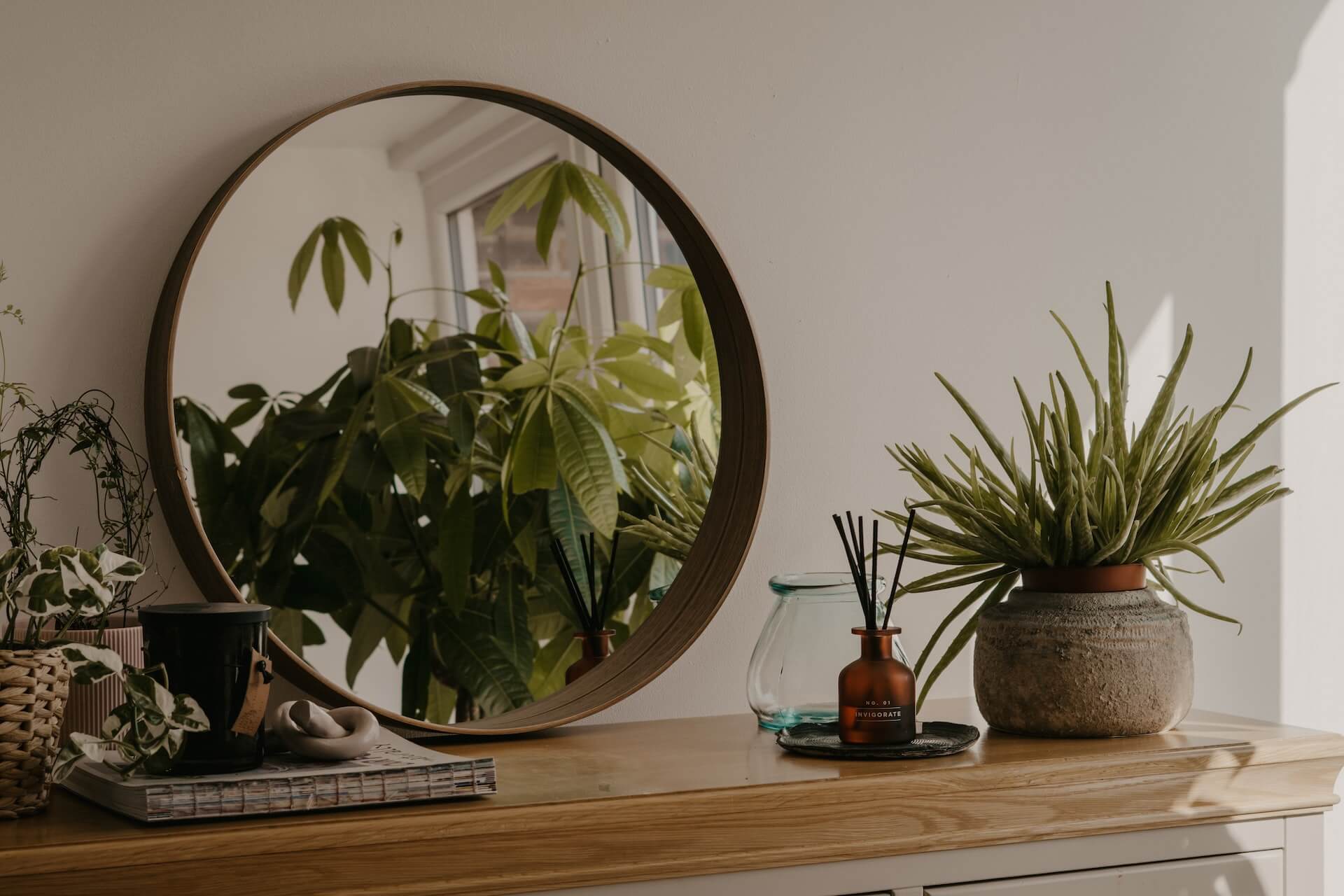
This article will cover choosing the right plants, what type of container to use, and how to care for your indoor water plants.
Indoor Plants That Grow Well In Water!
One of the great things about houseplants is that they can purify the air in your home. But did you know that some houseplants grow well in water? That’s right – no soil required!
If you’re looking for a low-maintenance plant to add to your indoor collection, consider one of these water-loving varieties:
1. Philodendron

Philodendron plants can be grown in water indoors with little effort. You only need a container, some stones or gravel, and water.
- Fill your container with water and add stones or gravel to the bottom. This will help to keep the roots of your plant from sitting in water.
- Next, cut a small piece of stem from a Philodendron plant. Make sure that the piece of the stem has at least two leaves.
- Place the stem in the water and wait for new roots to grow. Once the roots have grown, your plant will be ready to be transferred to a pot with soil.
2. Aglaonema
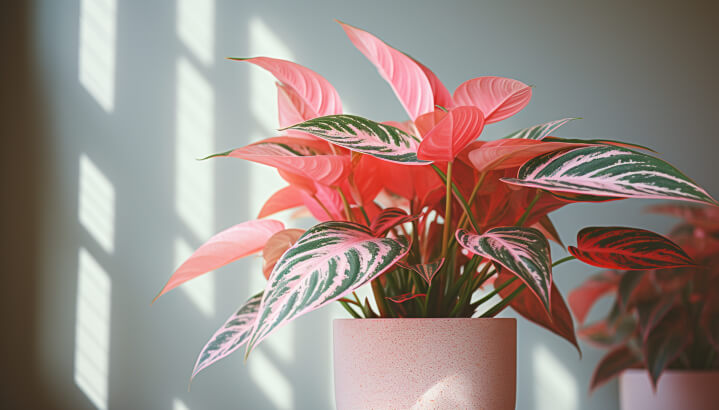
One of the most popular houseplants is the Aglaonema, or Chinese Evergreen. This plant is easy to care for and can thrive in low-light conditions.
- Aglaonemas can be grown in water indoors with proper care.
- Fill a clean pot or container with fresh, room-temperature water.
- Place the Aglaonema in the pot so that the roots are submerged.
- Change the water every week, and mist the leaves regularly.
Be sure to keep an eye on the water level in the pot, as Aglaonemas will not tolerate being allowed to dry out completely. If the leaves start to droop, the plant needs more water.
3. Pothos

Pothos is a beautiful, easy-to-care-for houseplant that can thrive in water. Pothos is a type of ivy and is related to philodendrons and anthuriums.
Pothos is a fast-growing plant and can reach up to 10 feet in length. It has heart-shaped leaves variegated with yellow, white, or green. These indoor plants tolerate low light conditions and can grow in artificial light.
- You need a container 12 inches deep to grow pothos in water.
- Fill the container with distilled or filtered water and place the plant in it. The roots should be completely submerged in water. Place the container in a bright location but out of direct sunlight.
- Change the water every one to two weeks, or when it becomes cloudy.
- Remove the plant from the container and discard the old water to change the water.
- Rinse the roots of the plant with fresh water and place them back .
4. Wandering Jew
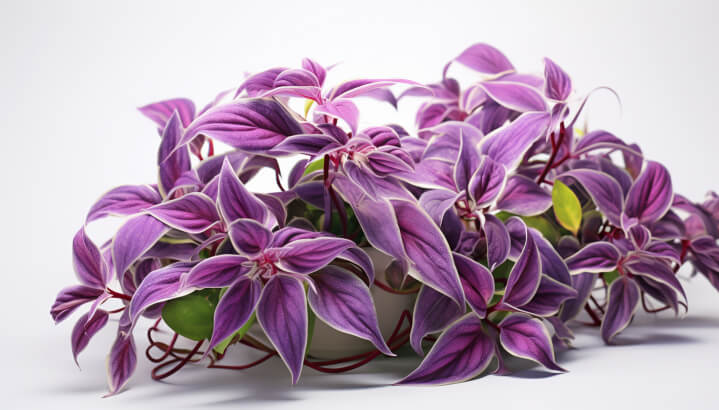
Wandering Jews are easy to care for and make excellent houseplants. Stem cuttings can propagate them, so you can quickly get more plants from one plant.
- To grow a Wandering Jew in water, simply take a stem cut from an existing plant and place it in a jar or vase of water.
- Keep the jar or vase in a bright location but out of direct sunlight.
- Change the water every week, and you should see roots starting to form within a few weeks.
- Once your plant has roots, you can either keep it in the jar or vase of water or pot it up into potting soil. Wandering Jews are not picky about soil and will do well in most potting mixes.
Water your plant when the soil is dry to the touch. Overwatering can cause root rot, so be sure to let the soil dry out between watering. If you’re growing your plants in water, change the water every week or so.
5. Syngonium
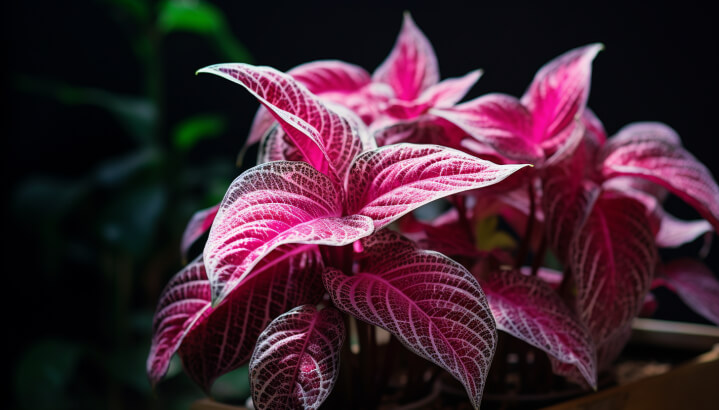
Syngonium plants are native to tropical climates and love warm temperatures and humid conditions. If you live in a dry climate, you can mist your Syngonium plant daily to help it thrive.
- To grow your Syngonium plant in water, you need a container at least six inches wide with drainage holes.
- Fill the container with fresh, room-temperature water. Place your Syngonium plant in the water, ensuring the roots are submerged.
- Change the water every one to two weeks, or as needed. You can also add a balanced liquid houseplant fertilizer to the water every month to help your plant grow.
6. Lucky Bamboo
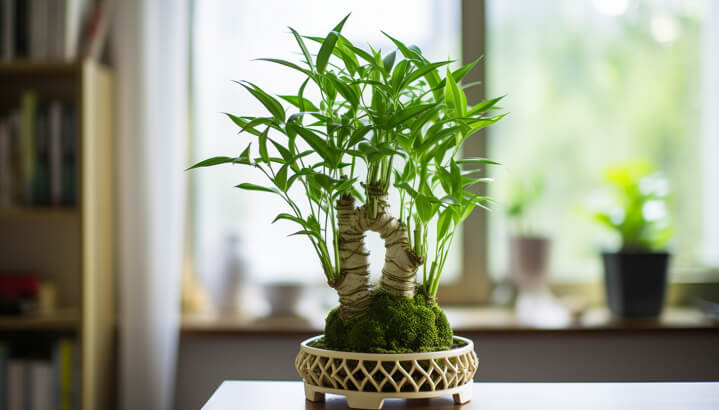
Lucky bamboo is one of the most popular houseplants to grow in water. Lucky bamboo is easy to care for and can thrive in various conditions.
- To grow lucky bamboo in water, you will need a container, some stones, and some clean water.
- Fill the container with clean water and add the stones.
- Place the lucky bamboo plant in the container.
- Change the water every week to keep it fresh.
- You can also add a drop of liquid fertilizer to the water every month to help the plant grow.
- Lucky bamboo does not need direct sunlight but requires some light.
- Place the plant in a bright spot but out of direct sunlight.
With proper care, lucky bamboo will thrive and bring good luck to your home!
7. Chinese Evergreen

One of the most popular houseplants is the Chinese Evergreen. It is very easy to grow in water and requires no soil.
- Just place the plant in a shallow dish of water and replace the water every week or so.
8. Spider Plant

Spider plants are easy to care for and don’t require much attention. They can tolerate low light levels and can even thrive in indirect sunlight. Spider plants also don’t need much water.
- You can place them in a water bowl and allow the roots to soak up the moisture they need.
- Spider plants are also very easy to propagate. You can take a cutting from an existing plant and place it in a glass of water.
- Within a few weeks, the cutting will develop roots and can then be transplanted into a pot of soil.
9. Arrowhead Plant
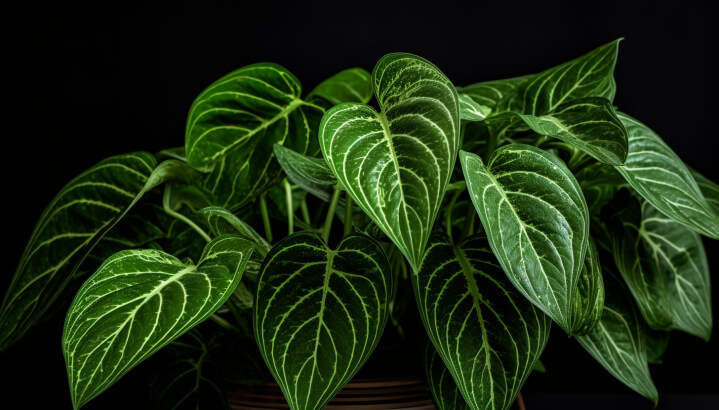
The arrowhead plant is an excellent choice for growing houseplants in water indoors. This plant is native to tropical regions and thrives in warm, humid environments.
The arrowhead plant is a low-maintenance plant that does not require much care. It can be grown in a small container of water and does not need to be fertilized.
- To grow an arrowhead plant in water, simply fill a container with water and place the plant in the water.
- The plant’s roots will quickly grow into the water, and the plant will start to thrive.
- If you are looking for a low-maintenance houseplant that can be grown in water, the arrowhead plant is a great choice.
10. Coleus

Coleus is a genus of annual or perennial plants that can be grown in water indoors. Coleus plants are native to tropical and subtropical regions of the world and come in various colours and patterns.
Coleus plants are easy to care for and make excellent houseplants. They can be grown in water indoors with just a few simple supplies. All you need is a container, some rocks or pebbles, and some plant food.
- To start, fill your container with water and add some rocks or pebbles to the bottom. This will help to keep your Coleus plant roots healthy and hydrated.
- Then, add some plant food to the water. This will provide nutrients for your plant as it grows.
- Place your Coleus plant in the container and put it in a sunny spot indoors.
Make sure to change the water weekly and add more plant food as needed. With just a little care, your Coleus plant will thrive indoors!
11. Begonia
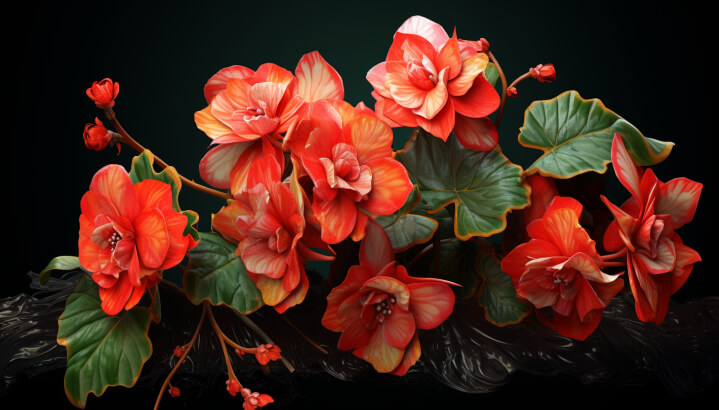
If you want to grow houseplants in water indoors, you can do so with begonias. Begonias are plants that can be grown in water without soil. You can grow them in a vase or other container filled with water.
To care for your begonias, change the water every week. Also, give them plenty of sunlight. Begonias thrive in bright, indirect sunlight.
- When watering your begonias, let the top inch of soil dry out before watering again. Water them until the water runs out of the bottom of the pot. Begonias don’t like to be too wet or too dry.
- If you want to fertilize your begonias, you can do so with a liquid fertilizer. Just add a few drops of fertilizer to the water when you change it each week.
Begonias are an excellent option for growing houseplants in water indoors. They’re easy to care for and will thrive in bright, indirect sunlight.
12. Impatiens
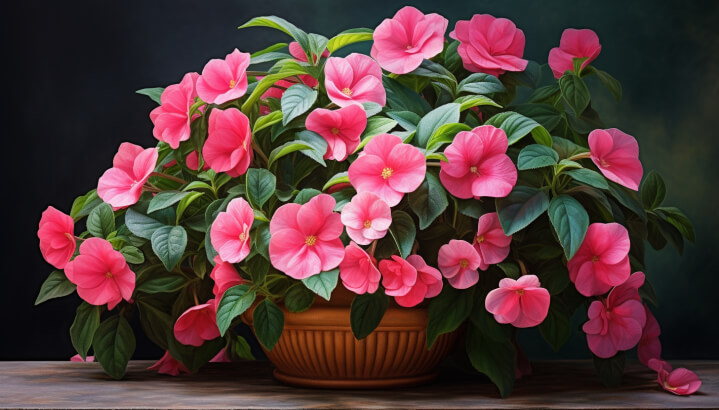
Impatiens are one of the most popular houseplants and one of the easiest to grow in water. All you need is a container, some pebbles, and some water.
- To start, fill your container with water.
- Then, add some pebbles to the bottom for drainage.
- Next, add your impatiens plant. Make sure that the roots are covered with water.
- Depending on your plant’s needs, you can place your container in a sunny or shady spot. Just be sure to check the water level regularly and add more when needed.
With just a little care, you can quickly grow impatiens in water indoors all year round!
13. Dracaena
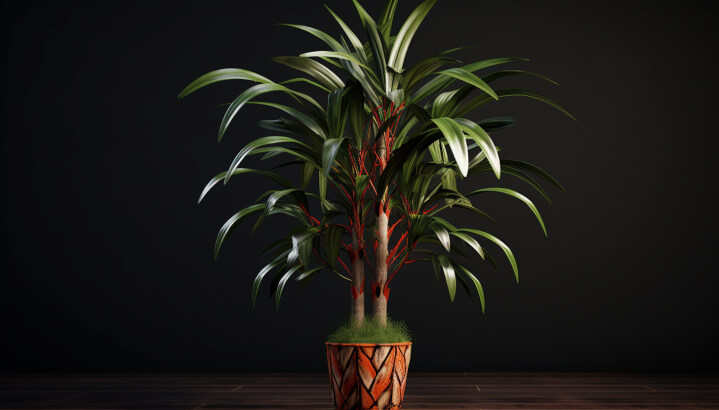
Dracaena water plants are beautiful, easy to care for, and great additions to any home. These plants are native to Africa and thrive in warm, humid conditions.
Dracaena water plants can be grown in water indoors with ease. All you need is a container, some pebbles or rocks, and some distilled or purified water.
- Fill the container with about an inch of water and place the plant in the water. Be sure to change the water every week to keep the plant healthy.
- To help your Dracaena plant thrive, place it in a spot that receives indirect sunlight. These plants do not like direct sunlight and will do their best in an area that is bright but not too sunny.
Water plants are a great way to add some green to your indoor space. They are easy to care for and make a beautiful addition to any home.
14. Croton

Croton plants need very little maintenance and can grow in various climates. They are perfect for people who want to enjoy houseplants’ beauty without worrying about over-watering them.
- You need a container 12 inches deep to grow croton in water.
- Fill the container with clean, room-temperature water.
- Place the croton plant in the container, ensuring the roots are submerged.
- Change the water every two weeks or whenever it starts to look cloudy.
- To keep your croton plant healthy, fertilize it every month with a half-strength solution of liquid fertilizer.
Croton plants are beautiful and easy to care for. With a little effort, you can enjoy these beautiful plants in your home for many years.
Indoor Water Plants: Care Tips
Like most people, you probably think of houseplants as something that needs to be grown in soil. But did you know that various plants can be grown in water? That’s right – no soil required!
If you’re interested in adding some water plants to your indoor gardening repertoire, here are a few tips to help you get started:
- Choose the right plants. Not all plants can be grown in water, so it’s essential to do your research and select species that will thrive in this environment. Some good options include philodendrons, pothos, peace lilies, spider plants, and bamboo.
- Prepare your container. Once you’ve selected your plants, it’s time to choose a container. Any vessel will work as long as it has drainage holes in the bottom. Fill the container with fresh water and place your plants inside.
- Give them light. Just like any other plant, water plants need sunlight to grow. Place your container in a spot that gets bright, indirect light, and make sure to rotate the plants occasionally, so they evenly absorb light on all sides.
Indoor water plants: Tips to place them correctly
If you want to grow indoor water plants, there are a few things you need to take into account to ensure they thrive. Here are some tips to help you get started:
- Place your plants where they will receive bright, indirect light. Too much direct sunlight can scorch their leaves, so it’s best to avoid caution.
- Make sure the container you’re using is clean and has drainage holes. Otherwise, your plants will quickly become waterlogged and rot.
- Use distilled or purified water if possible, as tap water can contain minerals that can build up in the soil and stunt the growth of your plants.
- Change the water every week or two, and add fresh nutrients. Over time, the water in the container will become stagnant and start supporting harmful bacteria growth.
- Choose the right plant. Not all plants can be grown in water, so do your research before you get started. Some good options include philodendrons, pothos, peace lilies, and snake plants.
Bottom-line
Keep this post in mind if you are interested in growing houseplants in water indoors. With these tips in mind, you’ll be well on your way to raising healthy and beautiful indoor water plants!
FAQs
1. What plants can grow in water indoors?
Peace lilies are known for their beautiful white flowers and ability to thrive in low-light conditions. Other popular plants that can be grown in water indoors include philodendrons, ferns, and spider plants.
2. Do water plants need light?
Water plants can tolerate low light conditions better than other types of plants. You don’t need to worry about watering them every day like you would with different types of plants. Simply let the plant’s roots soak in water for a few hours each week, and they will be fine.
